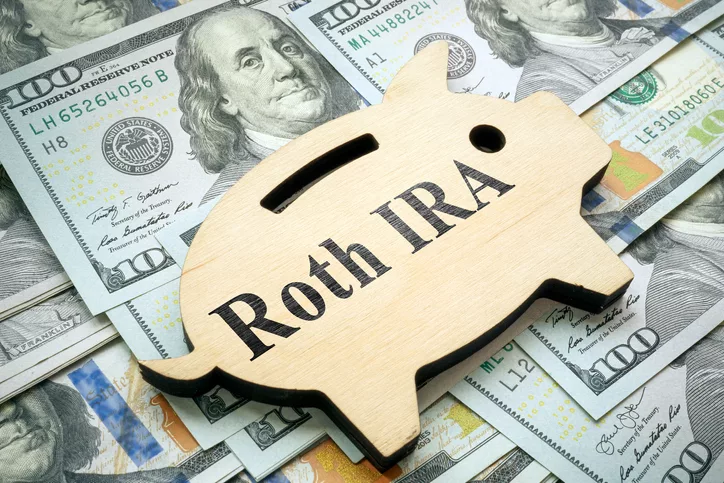
Regardless of your age, saving for retirement is likely a top priority. And it’s never too soon to begin saving. Even a little bit invested monthly today can have a significant impact down the road in terms of compound interest.
There are several options to consider when it comes to retirement savings plans. Which option you choose depends on several factors, including age, employment status, and retirement goals.
Many people invest in an employer-sponsored retirement plan, like a 401(k). Another option many turn to for retirement savings is an Individual Retirement Account (IRA). IRAs are a common investment choice for those that don’t have access to a retirement account through an employer. It’s also suitable for anyone who prefers to invest in a plan other than or in addition to their employer’s retirement plan. An IRA can potentially help lower your annual tax liability, as well.
Two Types of Individual Retirement Accounts (IRAs)
There are two types of IRAs, a Traditional IRA and a Roth IRA. A Roth IRA allows you to make after-tax contributions to the account and is best suited for those who expect to be in a higher tax bracket at the point in the future when they begin taking withdrawals.
A Traditional IRA allows you to make after-tax contributions and may allow you to make pre-tax contributions. It’s best suited for those who expect to be in the same or a lower tax bracket at the point in the future when they begin taking withdrawals.
Below is a breakdown of the similarities and differences between a Traditional and a Roth IRA to help you decide which is best for you based on your individual circumstances and retirement goals.
Traditional IRA
- Contributions grow tax-deferred
- Gives you immediate tax benefits subject to income limits and status of participating in employer-sponsored plans
- Contributions can be from pre- or after-tax dollars
- The maximum contribution for 2022 is $6,000
- Anyone with earned income is eligible to participate
- There is no contribution age restriction
- Withdrawals are penalty-free but taxed as current income after age 59 ½
- Mandatory distributions begin after age 72
- A 10% tax penalty is incurred for early withdrawals unless an exception applies
Roth IRA
- Contributions grow tax-free
- Earnings grow tax-free
- It gives you no current-year tax benefits
- Contributions come from after-tax dollars
- The maximum contribution for 2022 is $6,000 ($7,000 for those over age 50)
- Anyone with earned income below a certain level is eligible to participate
- There is no contribution age restriction
- Withdrawals are penalty- and tax-free after age 59 ½ and if you’ve met the minimum account holding period of five years
- No mandatory minimum distributions
- No income taxes for Roth IRAs passed onto your heirs
- A 10% tax penalty is incurred for early withdrawals unless an exception applies
Income Requirements for a Roth IRA
The IRS sets the contribution, deduction, and income limit amounts for retirement plans.
Your eligibility and contribution limit for a Roth IRA is determined based on your Modified Adjusted Gross Income (MAGI). As a single or joint filer, your maximum contributions begin to reduce at $125,000 and $198,000, respectively, for the 2021 tax year, and $129,000 and $204,000, respectively, for the 2022 tax year.
There are no income limitations to opening a Traditional IRA account.
Tax Deductibility for Traditional IRA Contributions
Traditional IRA contributions are fully tax-deductible if your income falls below a certain level and as long as you or your spouse don’t have an employer-sponsored retirement plan. The contribution amount that is partially deductible depends on where your MAGI falls and your employer-sponsored retirement plan status.
Questions to Ask When Considering a Roth vs. a Traditional IRA
When you’re wondering which option makes the most sense for you, ask yourself the following questions:
- Does it make more financial sense to take advantage of the potential tax benefits of a Traditional IRA today or wait and take advantage of tax-free withdrawals in the future?
- Do you expect to be in a higher tax bracket when you begin taking withdrawals, or do you expect to be at the same level or in a lower tax bracket?
- Do you meet the income requirements to contribute to a Roth IRA?
Once you have an idea of the direction you might like to go, it’s time to speak to a financial advisor who can ensure you make the best choice. There are a lot of nuances to retirement planning, and each individual’s and family’s circumstances are unique. As such, it’s best to consult a qualified financial planner, CPA, tax advisor, or investment manager for guidance on your specific circumstances and best retirement savings options.

